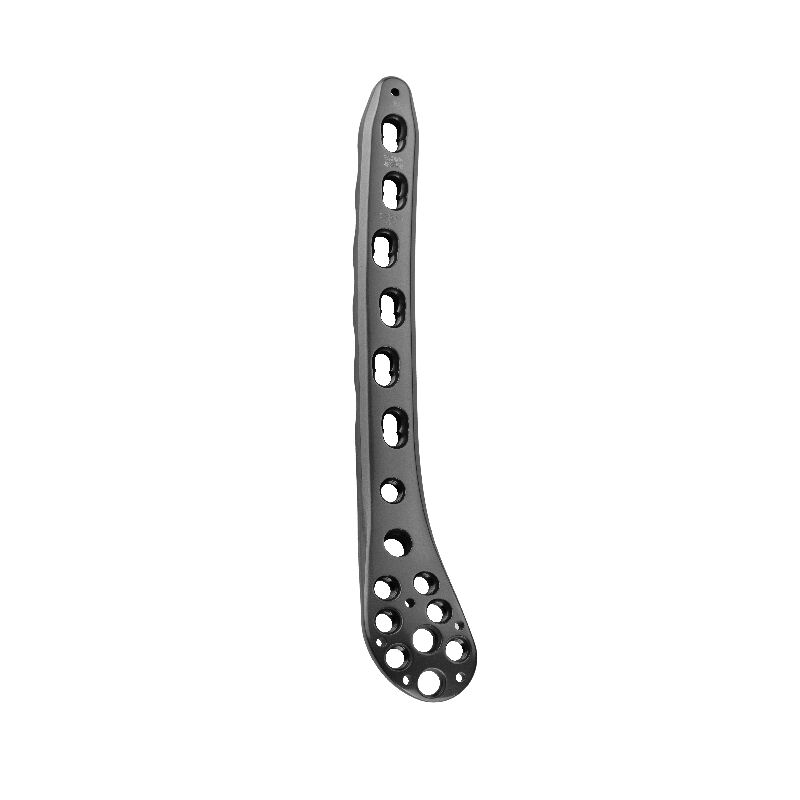The Evolving Role of Trauma Locking Plates in Fracture Management
From Conventional Fixation to Locking Systems
The shift from traditional plating techniques to modern locking systems has marked a paradigm shift in orthopedic trauma care. Conventional methods, which relied heavily on non-locking plates and screws, often fell short in providing the necessary stability for effective fracture healing. These techniques were particularly limited when it came to treating complex or unstable fractures, as observed in studies highlighting high rates of complications such as nonunion and malunion. The introduction of locking plate technology revolutionized fracture management by offering enhanced fixation strength and stability through its unique locking mechanism. This transition has significantly improved patient outcomes, with statistics showing reduced healing times and fewer complications among patients treated with locking systems. Such advancements demonstrate the vital role of locking plates in enhancing fracture management, providing a reliable solution to historical challenges in orthopedic care.
Addressing Historical Surgical Challenges
Before the advent of trauma locking plates, surgeons grappled with significant challenges in managing complex fractures. Traditional systems often struggled with maintaining stability, leading to issues like malunion and nonunion, especially in osteoporotic bones. The design of trauma locking plates emerged as a direct response to these surgical limitations, offering innovative solutions to these age-old problems. The locking mechanism and the angular stability provided by these plates have revolutionized the way complex fractures are managed. Evidence from various studies supports the effectiveness of these plates, showing substantial reductions in malunion and nonunion rates. By addressing these historical surgical challenges, trauma locking plates have paved the way for more predictable and successful fracture healing outcomes.
Impact on Modern Orthopedic Trauma Care
The impact of locking plates on modern orthopedic trauma care is profound, enhancing both patient recovery times and overall surgical outcomes. Their introduction marks a significant advancement, providing superior stability over traditional methods and promoting faster healing. Locking plates have become a standard component in orthopedic practice, integral to developing treatment protocols that prioritize rapid recovery and effective healing. Numerous citations and clinical studies demonstrate the widespread adoption of locking plates, underscoring their effectiveness and reliability in contemporary medicine. As an essential element of modern fracture management, trauma locking plates continue to influence treatment strategies and improve patient care significantly across the globe.
What Are Trauma Locking Plates? Core Mechanics and Design
Threaded Locking Screw Technology
Threaded locking screw technology plays a pivotal role in enhancing bone stability during fracture healing. This innovative approach ensures that the screws are securely locked into the plate, preventing any form of slippage and thus providing superior stabilization. By creating angular stability, locking screws minimize any unwanted movement at the fracture site, contributing significantly to optimal healing conditions. Expert opinions consistently affirm the efficacy of this technology in orthopedic applications, citing its ability to reduce micromotion and improve patient outcomes.
Fixed-Angle Construct Principles
The fixed-angle construct principles govern the operational mechanism of trauma locking plates, providing an unparalleled level of stability, especially in challenging cases like periarticular fractures. Unlike traditional plate designs, fixed-angle systems are engineered to maintain a consistent pressure at the fracture site, thereby reducing complications such as non-union. By securely anchoring screws at a fixed angle, these constructs ensure precise alignment and enhance fracture stabilization. Comparative analysis has revealed that fixed-angle systems outperform conventional designs by minimizing movement and promoting faster healing.
Compatibility with Biological Fixation Techniques
Trauma locking plates are meticulously designed to be compatible with biological fixation techniques, offering substantial benefits by integrating these elements for optimal healing outcomes. By aligning mechanical stability with biological principles, these plates foster a healing environment that promotes bone regeneration. Research has showcased the synergy between locking plates and biological fixation approaches, highlighting improved recovery rates and reduced complication risks. This compatibility ensures that the healing process is not solely reliant on mechanical fixation but is supported by physiological factors contributing to successful outcomes.
Key Technological Innovations in Locking Plate Systems
Advanced Biomaterials (Titanium Alloys, Bioresorbables)
The utilization of advanced biomaterials such as titanium alloys and bioresorbables has fundamentally transformed the construction of trauma locking plates. Titanium alloys are renowned for their exceptional strength and biocompatibility, making them highly suitable for orthopedic applications. They provide robust support and reduce the risk of allergic reactions, ensuring both safety and effectiveness. In contrast, bioresorbable materials represent an emerging frontier that promises to revolutionize future orthopedic surgeries. These materials dissolve over time, eliminating the need for surgical removal and reducing the risk of long-term complications. The potential of bioresorbables to integrate with human tissue further accentuates their importance in the evolving landscape of trauma care.
Anatomical Contouring for Specific Fracture Sites
Anatomical contouring in trauma locking plates allows these devices to precisely fit the unique geometries of specific fracture sites. This customization is crucial for enhancing fitment and improving fracture alignment, which, in turn, reduces the risk of complications such as improper healing. Anatomical designs streamline the healing process by minimizing tissue irritation and improving patient comfort. Statistics from clinical settings underscore the success of anatomical contouring, highlighting improved postoperative outcomes and reduced complication rates. This approach not only optimizes the treatment but also champions patient-centric care by addressing individual anatomical needs effectively.
Hybrid Compression/Locking Options
Hybrid compression/locking options are an innovative amalgamation of compression and locking mechanisms within trauma plates. These systems enhance stability significantly, especially in complex fracture scenarios where reliable fixation is paramount. By combining the benefits of both systems, they offer comprehensive support, lessening the likelihood of fracture displacement. Expert studies have validated the superiority of hybrid systems over standard methods, confirming their role in improving surgical outcomes and reducing recovery times. This dual approach in trauma plate design demonstrates a significant leap forward, ensuring optimal support and adaptability across diverse fracture types.
Clinical Advantages Over Traditional Plating Methods
Superior Fixation in Osteoporotic Bone
Trauma locking plates are particularly beneficial in contexts involving osteoporotic bone, where traditional methods struggle to offer stable fixation. Due to the compromised bone quality in osteoporosis, securing a fracture becomes challenging with conventional plates, which often fail to maintain optimal pressure. Locking plates, by utilizing specialized screws, manage to engage the bone effectively, providing superior stability and reducing the risk of non-union. A study has shown that patients with osteoporotic fractures treated with locking plates exhibit significantly improved outcomes compared to those treated with traditional methods. Experts in the field emphasize the importance of adopting locking plates for patients with osteoporotic bone to enhance healing efficacy and long-term stability.
Reduced Soft Tissue Disruption
Locking plates also demonstrate an advantage in surgical procedures by causing less soft tissue disruption. Unlike conventional plates, which often necessitate extensive manipulation of the tissue, locking plates can be applied with minimal invasiveness. This leads to quicker recovery times and decreases the likelihood of postoperative complications. When the soft tissue is preserved, patients experience less pain and can begin mobilizing earlier, improving overall recovery experience. Clinical studies consistently highlight the benefits of locking plates in preserving soft tissue integrity, which contributes significantly to the improved patient outcomes observed in terms of faster healing and reduced complications.
Improved Healing Rates and Reduced Complications
The use of trauma locking plates is associated with enhanced healing rates, thanks to their design which reduces micromotion at the fracture site. This stability creates an optimal environment for bone healing, preventing complications such as non-union. Statistics show a marked improvement in success rates for fractures treated with locking plates compared to traditional methods. Additionally, expert testimonials underline how these plates improve patient outcomes, noting the reduced incidence of complications and the diminished risk of re-surgery. By fostering a more stable healing pathway, locking plates ensure quicker functional recovery and long-term benefits for patients.
Applications in Complex Orthopedic Trauma Cases
Multi-Fragmentary Distal Radius Fractures
Trauma locking plates have become indispensable in addressing the complexities of multi-fragmentary distal radius fractures. Unlike traditional methods, locking plates allow for effective stabilization of the fragmented segments, ensuring precise realignment and steady healing. Case studies have shown positive outcomes, with many patients experiencing faster recovery times and improved function. For instance, the angular stability provided by locking screws often results in less slip at the fracture site, facilitating rapid bone healing. Experts suggest surgical approaches that integrate minimal invasive techniques to optimize outcomes when using locking plates for such fractures. This enhances patient comfort while reducing recovery time, making locking plates a preferred choice for complex trauma cases involving distal radius fractures.
Proximal Humerus Fractures with Bone Loss
Proximal humerus fractures, particularly those involving significant bone loss, present unique challenges that can be effectively managed with locking plates. The stability required in these cases is crucial, as the proximal humerus is a key anatomical area implicating shoulder function. Clinical evidence supports the utilization of locking plates in these scenarios, indicating their success in enhancing bone reconstruction and reducing the incidence of malunion. The locking mechanism ensures that even in conditions of bone loss, the apparatus maintains secure fixation, preventing motion at the fracture site. Clinicians are recommended to employ locking systems that align with the patient's specific anatomical and functional needs to achieve optimal clinical outcomes.
Periarticular Fractures with Ligamentous Involvement
Treating periarticular fractures complicated by ligamentous involvement requires an approach that ensures stability without additional trauma to the ligaments. Locking plates shine in this context, offering steadfast support to the fractured bone fragments while preserving soft tissue integrity. Case analyses illustrate how locking systems contribute to surgical efficacy, enhancing stabilization even when ligaments are compromised. The angulated locking screws provide stability without additional pressure on the compromised area, enabling improved surgical results. Best practice recommendations for implementing locking plates in these situations focus on careful alignment and precise screw placement to maximize outcomes and minimize soft tissue disruption.
Frequently Asked Questions (FAQ)
What is a trauma locking plate?
A trauma locking plate is a medical device used in orthopedics to provide stability and fixation in fracture management. It features a unique locking mechanism that ensures the screws are securely anchored to the plate, enhancing fracture stabilization and promoting healing.
How do locking plates differ from traditional plates?
Locking plates differ from traditional plates in their unique screw-locking technology, which provides greater angular stability and minimizes movement at the fracture site. This feature significantly reduces complications such as malunion and non-union.
What are the benefits of using trauma locking plates in orthopedic surgery?
Trauma locking plates offer enhanced stability, reduced healing times, and decreased complications in orthopedic surgery. They are particularly effective in complex fractures, osteoporotic bones, and cases where soft tissue preservation is vital.
Can trauma locking plates be used in cases with bone loss?
Yes, trauma locking plates can be effectively used in cases with bone loss, as their design provides secure fixation even in challenging conditions. They facilitate bone reconstruction and minimize the risk of complications.
Table of Contents
- The Evolving Role of Trauma Locking Plates in Fracture Management
- What Are Trauma Locking Plates? Core Mechanics and Design
- Key Technological Innovations in Locking Plate Systems
- Clinical Advantages Over Traditional Plating Methods
- Applications in Complex Orthopedic Trauma Cases
- Frequently Asked Questions (FAQ)
 EN
EN
 FR
FR
 ES
ES
 AR
AR

